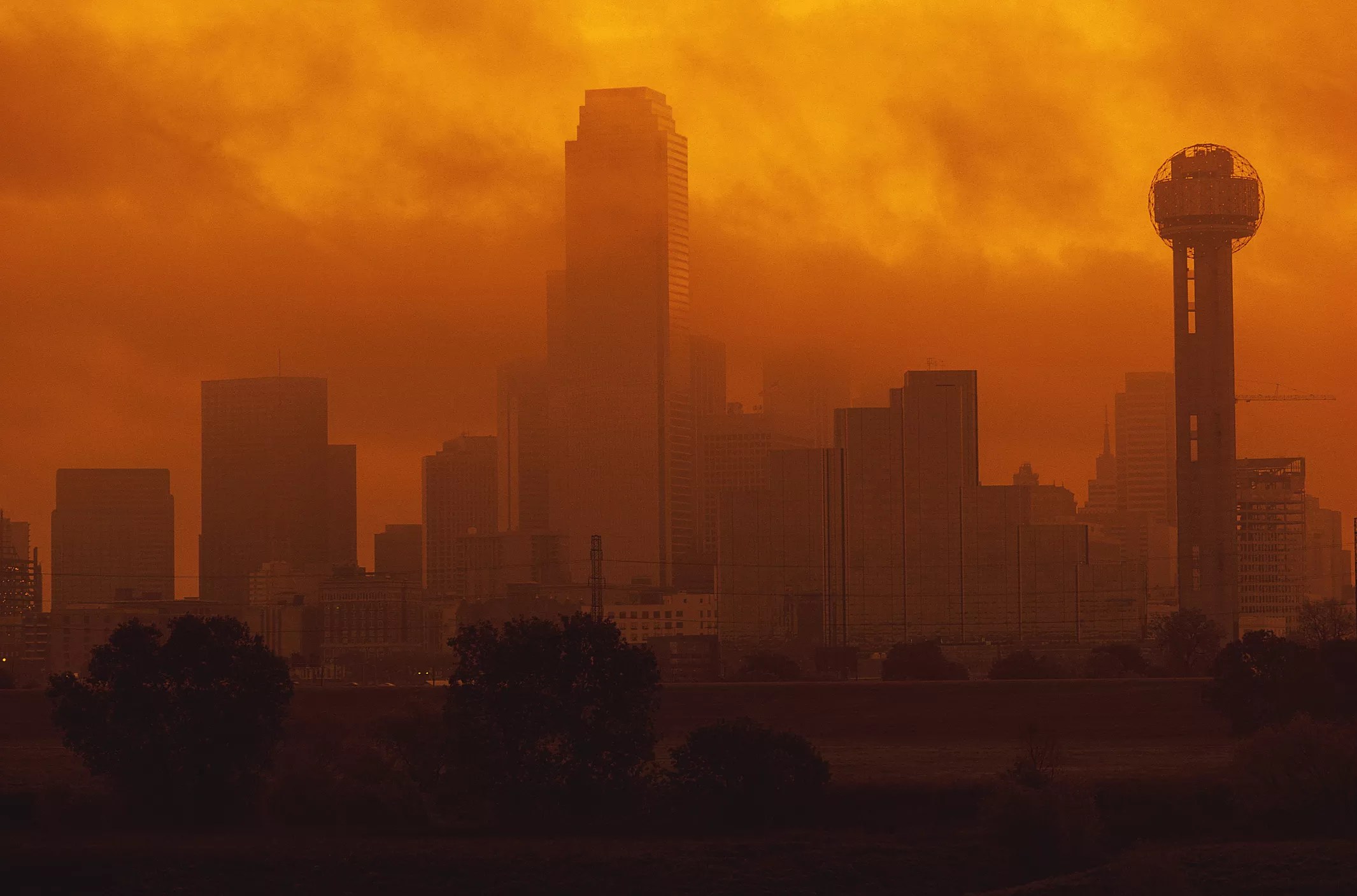
Getty Images

Audio By Carbonatix
If you’ve driven on a Dallas freeway in the summer, chances are you’ve seen the sign: “Ozone Action Day Tomorrow.” The announcement – followed by a list of ways to cut down your ozone emissions: walking, carpooling or taking DART – punctuates the daily drudgery of a hot summer commute.
Have you ever wondered if those signs actually do anything, if people change their well-worn patterns just because of an orange and black sign flashing past the window? We did too. But the answer, it turns out, is complicated.
Ozone gas is found both in the earth’s upper atmosphere, where it’s essential, and at ground level, where it’s a pollutant. Ozone is formed when volatile chemicals emitted by things like cars and manufacturing facilities react with sunlight, according to the Texas Commission on Environmental Quality.
Ozone alert days are issued when Dallas’ 20 or so monitoring stations indicate that levels in the air are at risk of surpassing safe amounts the following day, said Chris Klaus, a senior program manager for the North Texas Council of Governments.
Dallas, make your New Year’s Resolution Count!
We’re $11,750 away from our End-of-Year campaign goal, with just a few days left! We’re ready to deliver — but we need the resources to do it right. If Dallas Observer matters to you, please contribute today to help us expand our current events coverage when it’s needed most.
An ozone alert displayed on a freeway sign gets overridden by higher priority messages like Amber alerts, silver alerts, construction information and traffic accident notices.
Dallas ozone season runs from March through November each year. As this year’s season winds down, we took a look at some of the numbers for the past season.
While traffic speed and number counts are tracked, it’s hard to link changes in traffic volume to ozone action day displays, because not all highway signs show the same message on a given day, Klaus said.
An ozone alert displayed on a freeway sign gets overridden by higher priority messages like Amber alerts, silver alerts, construction information and traffic accident notices, Klaus said. Additionally, while there is an inventory of where the signs are located and what messages they can display, what was actually posted on a message board on a given day is not archived, he said.
It is something he’s interested in looking into more closely, though, now that the Observer has brought up the question, he said.
What is available, though, is DART ridership data. At least for the months of June through August this year, it appears more likely that Dallas residents would ride public transportation because it was Thursday, than because of an ozone action day.
Daily ridership in June through August ranged from a low of 78,919 on Sunday, June 16 (apparently no one likes to take public transit for Father’s Day) to a high of 229,060 on Thursday, Aug. 29. In general, more people take public transit during the week than on the weekends, which did not change on ozone action days. On Sunday, June 9, an ozone action day, only 79,366 riders took public transit.
There were 24 ozone action days in that time period, but just a handful corresponded to DART’s highest ridership days. Of the 10 highest DART ridership days during the three-month period surveyed, only three were ozone action days.
The top three ridership days, on which more than 225,000 people rode the DART’s bus, train and streetcar services, were not ozone action days. They were two Thursdays and a Wednesday, which were consistently high ridership days throughout the survey period.
The fourth-highest ridership day between June and August was an ozone action day, but it was also a Thursday.
Judging by the available numbers, at least when it comes to public transit decisions, Dallas residents are creatures of habit who may ride DART every day to help the environment, but don’t seem particularly inspired to do so on bad air-quality days.